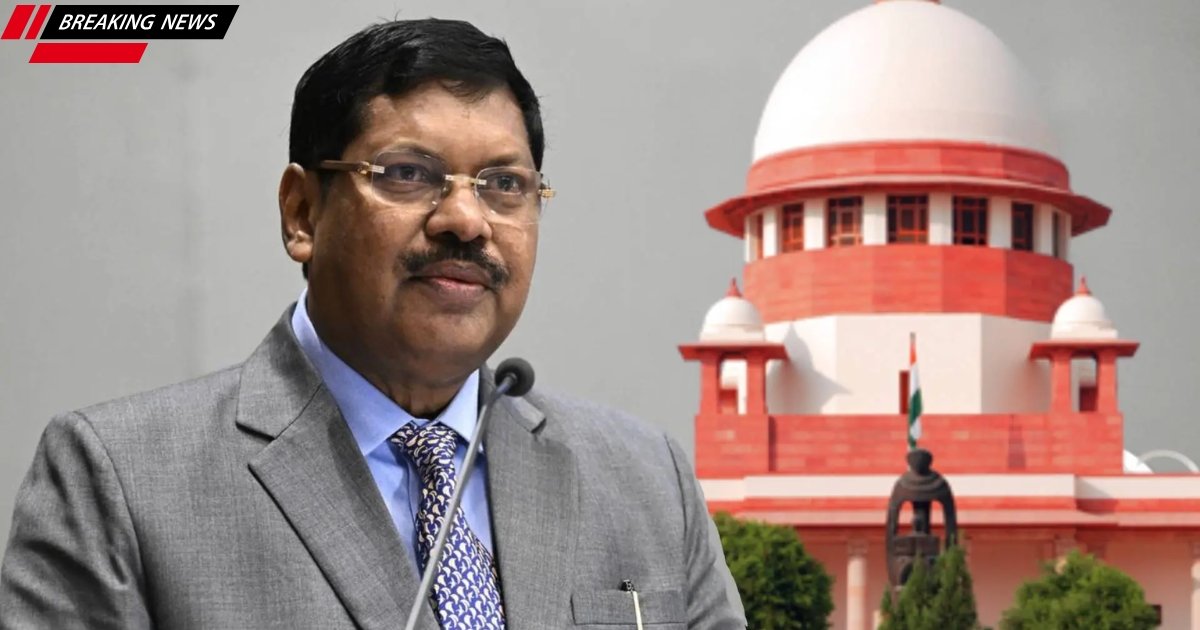
In a major step for the Indian judiciary, Chief Justice of India Sanjiv Khanna has recommended Justice B.R. Gavai to take over as the next Chief Justice. This follows the rule of seniority and marks a historic moment for the Supreme Court of India.
A Milestone in Judicial Appointments
Justice Bhushan Ramkrishna Gavai, the second-most senior judge in the Supreme Court, is set to become the 51st Chief Justice of India. If he takes over, he will be the second Dalit judge to hold this position after former CJI K.G. Balakrishnan, who served from 2007 to 2010.
Justice Khanna, the current Chief Justice, took office in November 2024 and will retire on May 10, 2025. Following the usual tradition, the Chief Justice recommends the next senior-most judge to the Union Law Ministry before retiring. Earlier this month, Justice Khanna officially recommended Justice Gavai for the top post.
Charting Justice Gavai’s Judicial Path
Justice Bhushan Gavai was born on November 24, 1961, in Maharashtra. He started his legal career in 1985 after enrolling as an advocate. He began practicing at the Bombay High Court, where he worked on civil, criminal, and constitutional cases.
Then in 2003, he became a judge at the Bombay High Court and served there for more than 16 years. In May 2019, he moved up to the Supreme Court of India.
Since joining the top court, Justice Gavai has played a key role in several important cases. He has been part of benches that dealt with constitutional issues, environmental concerns, and social justice matters. Throughout his career, he has shown a strong dedication to justice, equality, and protecting people’s fundamental rights.
Implications of the Appointment
Justice Gavai’s expected promotion to Chief Justice of India holds both symbolic and practical importance. He would become only the second Dalit to lead the Supreme Court, which makes this a big moment for inclusion and representation.
For years, people have criticized the judiciary for being dominated by upper castes and lacking diversity. So, his appointment stands out as a step forward. Many legal experts and civil rights activists praised the move. They believe it pushes the judiciary toward greater fairness and social justice.
Judicial Succession and Term of Office
Chief Justice D.Y. Chandrachud is set to retire on November 10, 2024. Following tradition, he has recommended the next senior-most judge, Justice Sanjiv Khanna, to take over the top post.
If the government approves the recommendation, Justice Khanna will become the Chief Justice of India on November 11, 2024. However, his term will be short, as he is due to retire on May 13, 2025.
Defining Decisions and Judicial Philosophy
Justice Gavai follows a balanced and thoughtful approach to the law. He respects past rulings but also shows concern for the rights of marginalized and underrepresented communities.
Throughout his time on the bench, he has made several important contributions:
- Protecting the Environment: He helped decide cases that focused on sustainable development. He worked to find a fair balance between economic growth and protecting nature.
- Supporting Social Justice: He spoke up for affirmative action and strongly supported the rights of Scheduled Castes and Scheduled Tribes under the Constitution.
- Reforming the Criminal Justice System: He raised concerns about delays in court cases and pushed for more transparency and accountability in the legal process.
Educational Background and Legal Career
Justice Sanjiv Khanna started his legal career in 1983 after enrolling with the Bar Council of Delhi. He first practiced at the Tis Hazari district courts, then moved on to the Delhi High Court and various tribunals.
Over the years, he built strong expertise in areas like tax law, company law, arbitration, constitutional matters, and environmental issues. In 2005, he became an additional judge at the Delhi High Court and was confirmed as a permanent judge in 2006.
Then in a rare move, he joined the Supreme Court directly on January 18, 2019, without serving as a Chief Justice of a High Court, a path not often taken in India’s judicial system.
Justice Khanna’s Jurisprudential Contributions
Justice Khanna has played a major role in several important Supreme Court decisions:
- Electoral Bonds (2024): He helped strike down the Electoral Bond Scheme. The court said anonymous political donations violate the public’s right to know, which is crucial for informed voting.
- Article 370 (2023): He supported the decision to uphold the removal of Article 370. He explained that while the article showed India’s unique federal setup, removing it didn’t change the country’s overall federal structure.
- Right to Information (2019): He ruled that the Chief Justice’s office must follow the RTI Act. He stressed the need to balance transparency with the independence of the judiciary.
Leadership Roles and Legal Reforms
Besides his work as a judge, Justice Khanna has taken on several key administrative roles. As the Executive Chairman of the National Legal Services Authority (NALSA), he leads major initiatives like nationwide Lok Adalats. These events have helped settle many legal cases and resolved large financial disputes.
Earlier, while working at the Delhi High Court, he also led important institutions. He served as the head of the Delhi Judicial Academy, the Delhi International Arbitration Centre, and the District Court Mediation Centers. Through these roles, he helped improve legal training, arbitration, and mediation services.
Shaping the Future: Legacy and Vision
Justice Khanna is set to become the next Chief Justice, and many expect him to bring deep experience and a strong focus on transparency and judicial reform. His wide legal background and role in important court decisions prepare him well to handle the challenges of India’s legal system during his term.
Final Thoughts
Justice Gavai’s rise as the next Chief Justice is a big step toward inclusion and steady leadership. He brings years of experience and a strong focus on social justice. As a result, his leadership shows how India’s legal system is changing and moving toward fairness and reform.
